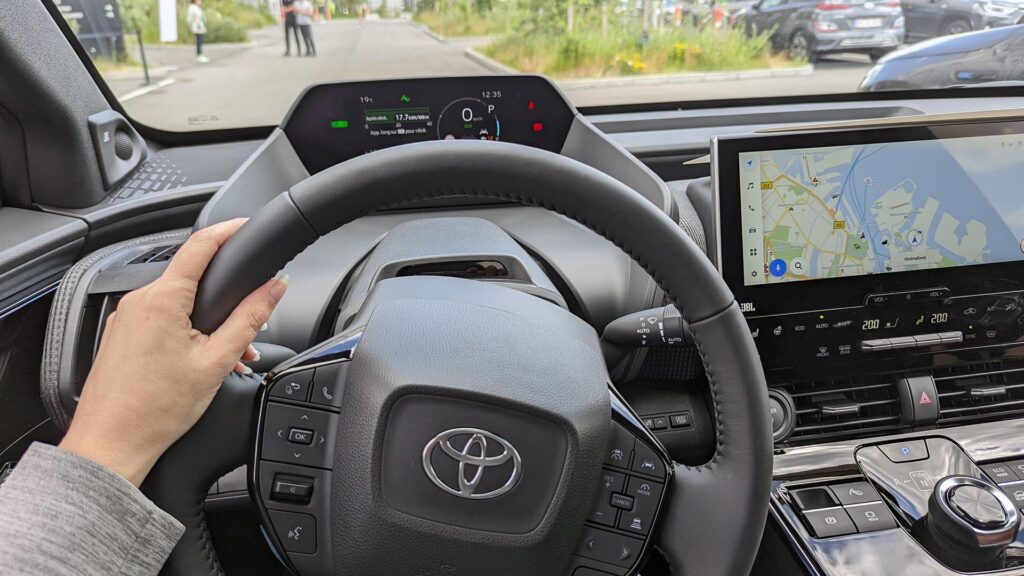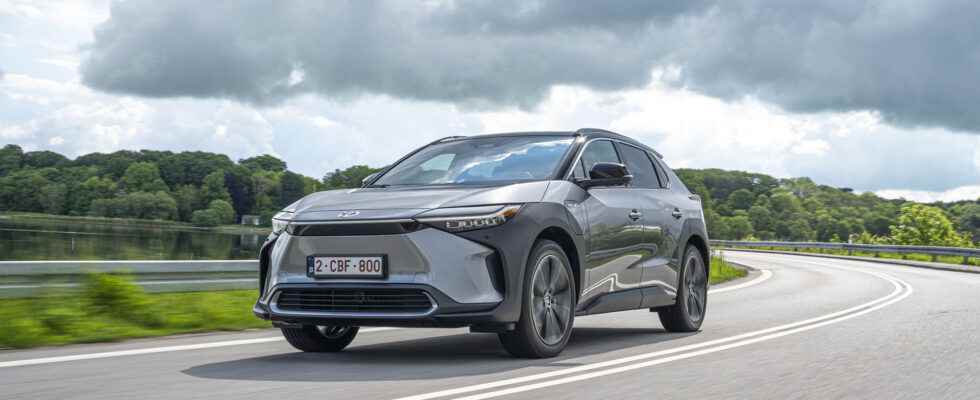Two recent European tests seem to show that the autonomy of the Toyota bZ4X melts visibly. The result is far too far from WLTP standards to be satisfied, especially for a model finalist for the “car of the year” award.
Toyota is recognized for its reliability, at least on hybrid and thermal models. With its first 100% electric model, the brand is having a little more difficulty. Since its launch, the bZ4X has had a few setbacks, including a risk of wheel detachment, which led to a recall of the vehicles delivered and a problem with recharging in winter conditions. Two recent European tests (FDM on November 25 and Challenges on November 30, 2022) highlight a new hiccup on the model: excessive consumption, going so far as to halve the autonomy announced by the manufacturer.
Toyota responded to the Danish media FDM, indicating to check the situation, even if a priori nothing is abnormal on the model. This is not necessarily good news for buyers, even less when you know that the model is a finalist for the European “car of the year” trophy.
246 km of autonomy instead of 504 km on the FDM test
The test was carried out in winter conditions at 6°C and on a Danish motorway at a speed of 110 km/h. The result of 246 km of autonomy, instead of 504 km as announced by the manufacturer, also corresponds to other observations made in Norway and Sweden, according to FDM.
It is normal that the consumption on the motorway, moreover in winter conditions, is much higher than the WLTP homologation. Homologation is carried out at a regulated temperature of 15-20° C, on a very standardized protocol, which contains only a small part corresponding to motorway traffic. If Toyota is caught up in these tests, it is because the difference between the homologation and the tests in real conditions exceeds 50% difference.
Volkswagen, Mercedes or Tesla are around 30-33% more consumption, over the same financial year. This gives a trend of what can be expected from other electric cars of equivalent generation. The Toyota BZ4X, and by extension its clone the Subaru Solterra, stand out with the worst result in the category. The charging issue should not affect European vehicles, as it concerns the LFP battery, which we do not have in our market. However, this limited range in winter could quickly put a brake on buyers in the Nordic countries, the biggest markets for an electric vehicle like the BZ4X.
This “dunce’s cap” is also confirmed by the test carried out by Nicolas Meunier for Challenges in France. On a Paris/Laval trip, the BZ4X SUV consumed an average of 30.1 kWh/100 km at 130 km/h, with cool temperatures at the end of November. This is abnormally high for this category of vehicle. For comparison, a Model Y makes less than 20 kWh/100 km on the same route. For a user who does not want to flirt too much with the risk of breaking down, this encourages recharging every 200 km of highway travel. Knowing that in addition the charging curve collapses after 80%, it will be necessary to multiply the charging stops. This is really a brake on the versatility expected of such a model.
During our test of the Toyota BZ4X, we also had reservations about the consumption of this electric novelty. The test route was very favorable to obtain good consumption, and already the results of the BZ4X were not really exciting, just correct.

Toyota specifies that this may come from too large a “reserve”
Toyota communicates on a battery capacity of 71.4 kWh. Despite requests, the Japanese manufacturer does not communicate on the useful capacity of the battery. It is probably on this first point that the brand made a bad strategic choice. According to the tests, the useful capacity would be a little above 60 kWh.
Brand spokespersons told FDM media that the BZ4X had 9% power remaining when the counter reached zero. A “reserve” surely oversized, because few customers like to flirt with zero, even knowing that there is still energy available behind.
If this reserve could evolve with a remote update (OTA) of its software, to gain a few kilometers of autonomy, this does not explain the relatively gargantuan appetite of this car on the highway when the temperatures drop.
The Toyota BZ4X is nonetheless a pleasant vehicle to drive on a daily basis, which we really enjoyed testing. However, with recent information, it still seems more suitable for daily use, such as commuting, than for going on an adventure.
